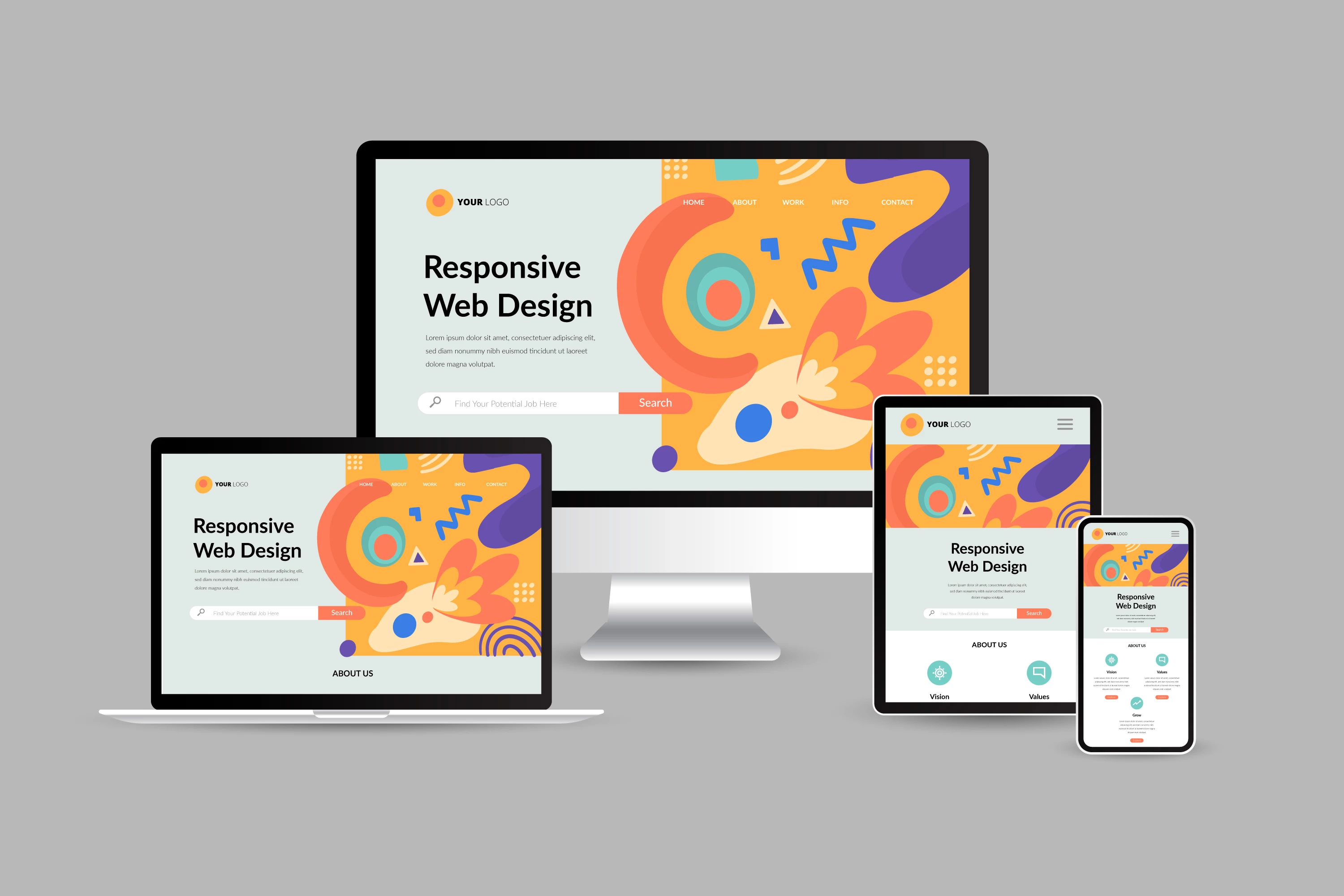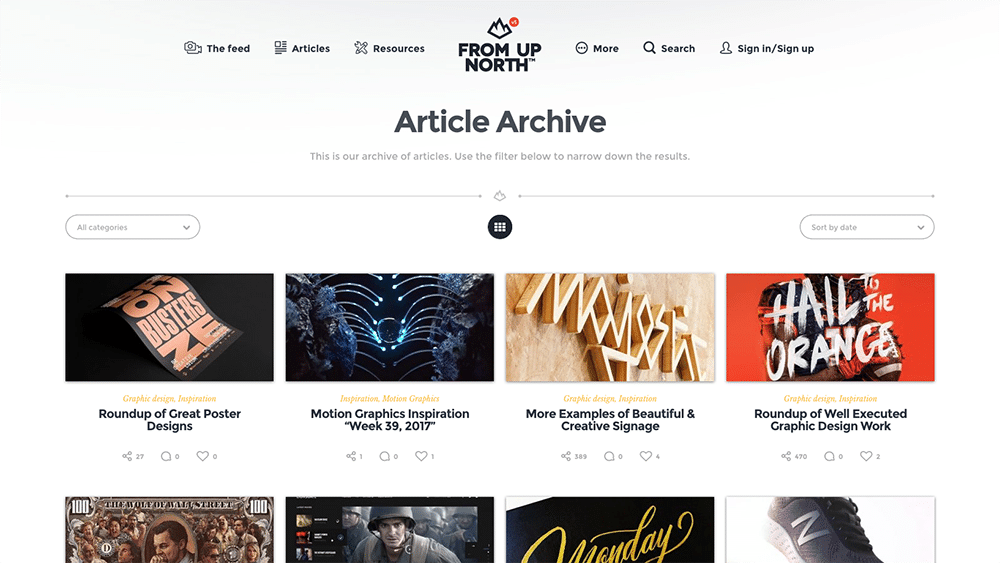Modern Website Layout That Records Focus and Transforms
In a progressively electronic landscape, contemporary website design has actually emerged as an essential consider recording individual focus and driving conversions. By tactically using visual hierarchy, receptive designs, and engaging interactive components, designers can produce experiences that not only bring in visitors yet also facilitate purposeful interactions. Reliable call-to-action techniques play a critical function in leading users towards preferred results. As we discover these necessary components, it ends up being clear that understanding their interaction can substantially influence a site's efficiency and user contentment. What are the crucial elements that absolutely make a difference?
Importance of Visual Hierarchy
Visual pecking order is a crucial component in web site design, as it overviews individuals' interest and boosts their general experience. By purposefully arranging content, developers can route individuals to the most crucial info initially, thus raising interaction and enhancing functionality.
Including a logical circulation in web content arrangement is essential; for example, positioning the most crucial info on top of a page promotes prompt recognition. In addition, consistent use of typography, such as differing font dimensions and styles, aids establish a clear material structure. This company not only help in navigating but also constructs trust fund, as customers feel more comfortable when they can quickly discover what they are looking for.
Eventually, a well-executed aesthetic hierarchy not only enhances aesthetic allure yet also considerably affects customer actions. By focusing on vital aspects and guaranteeing a seamless experience, designers can properly convert site visitors into clients, enhancing the value of this foundational design principle in modern site development.
Responsive Design for All Devices
Developing a smooth experience throughout different gadgets is necessary in today's electronic landscape, where customers accessibility internet sites from tablet computers, desktop computers, and smartphones alike. Responsive layout is a vital technique that makes sure web sites adjust fluidly to various screen sizes, orientations, and resolutions. By utilizing versatile grids, images, and CSS media questions, designers can develop formats that preserve aesthetic stability and functionality, no matter the gadget being used.
The relevance of responsive layout prolongs beyond aesthetics; it straight impacts individual engagement and conversion prices. A web site that functions well on all gadgets urges longer sees and decreases bounce prices, as individuals are a lot more most likely to engage with content that is simple to browse. Search engines, particularly Google, focus on mobile-friendly websites in their positions, making responsive design a vital component of search engine optimization (SEO)
Including receptive design not just boosts customer experience but likewise improves the growth procedure. By creating a single website that works across gadgets, services can conserve time and resources compared to establishing separate mobile and desktop versions. Ultimately, receptive layout is a fundamental strategy for contemporary web site layout, making sure access and complete satisfaction for all customers, despite their tool.
Involving Interactive Aspects
While a responsive style prepares for a practical site, incorporating engaging interactive elements is crucial for catching customer interest and promoting deeper connections. Website Design. Interactive aspects, such as animations, tests, and clickable infographics, produce a much more why not try here vibrant user experience, urging site visitors to invest even more time on the site
Integrating interactive attributes can also guide customers with complex info, making it easier to absorb content. Interactive sliders can illustrate item variants, while embedded videos can offer demonstrations or testimonies that resonate even more than static photos or message. Moreover, gamification strategies, like benefits for completing jobs or engaging with material, can improve customer inspiration and retention.
Effective usage of interactive aspects not just improves the customer experience but can likewise lead to higher conversion prices. It is necessary to balance interactivity with efficiency; overly complex attributes might hinder website rate, negatively influencing customer contentment.
Structured Navigation Practices
Reliable navigating is a cornerstone of any type of successful site, as it straight influences user experience and content accessibility. Streamlined navigation practices guarantee that users can easily locate details, boosting their interaction with the site. A well-structured navigation menu need to be intuitive and easy, usually including a limited number of main classifications to avoid overwhelming visitors.
To attain structured navigation, designers should focus on a hierarchical framework that rationally organizes content. Executing breadcrumb trails can give individuals with context regarding their present location within the website, permitting seamless backtracking. Additionally, making use of drop-down food selections can efficiently save room while still providing accessibility to subcategories.
Responsive design is critical, as navigation must be practical throughout all devices (Website Design). Mobile customers, specifically, gain from touch-friendly food selections and retractable sections that keep use without endangering appearances

Efficient Call-to-Action Methods
A well-crafted call-to-action (CTA) is important for leading users toward desired end results on a site, as it motivates them to involve with content or buy. To optimize their my response efficiency, CTAs should be clear, engaging, and purposefully positioned throughout the site.
First, utilize action-oriented language that communicates urgency or worth, such as "Get moved here Begun," "Sign up with Currently," or "Case Your Discount rate." This language not only encourages individuals but additionally sets clear expectations about the next steps.
Second, think about layout elements; CTAs ought to stand out aesthetically with contrasting shades, adequate whitespace, and noticeable positioning. A switch that is easy to see and click rises the chance of user communication.
Additionally, customizing CTAs based on customer behavior or demographics can considerably boost involvement. Customized messages reverberate more with individuals, driving higher conversion prices.

Conclusion
These components collectively improve user experience, making certain that visitors continue to be involved and encouraged to check out web content even more. By prioritizing these design principles, organizations can dramatically boost user retention and conversion rates, inevitably leading to higher success in the electronic landscape.
In an increasingly digital landscape, contemporary website design has actually arised as a crucial element in capturing user attention and driving conversions.Aesthetic pecking order is an essential aspect in website style, as it overviews customers' focus and enhances their overall experience.The value of receptive layout extends past looks; it directly impacts customer engagement and conversion rates.Including receptive style not only boosts individual experience yet additionally improves the growth process. Ultimately, responsive layout is a fundamental strategy for modern-day website layout, guaranteeing availability and satisfaction for all users, no matter of their device.